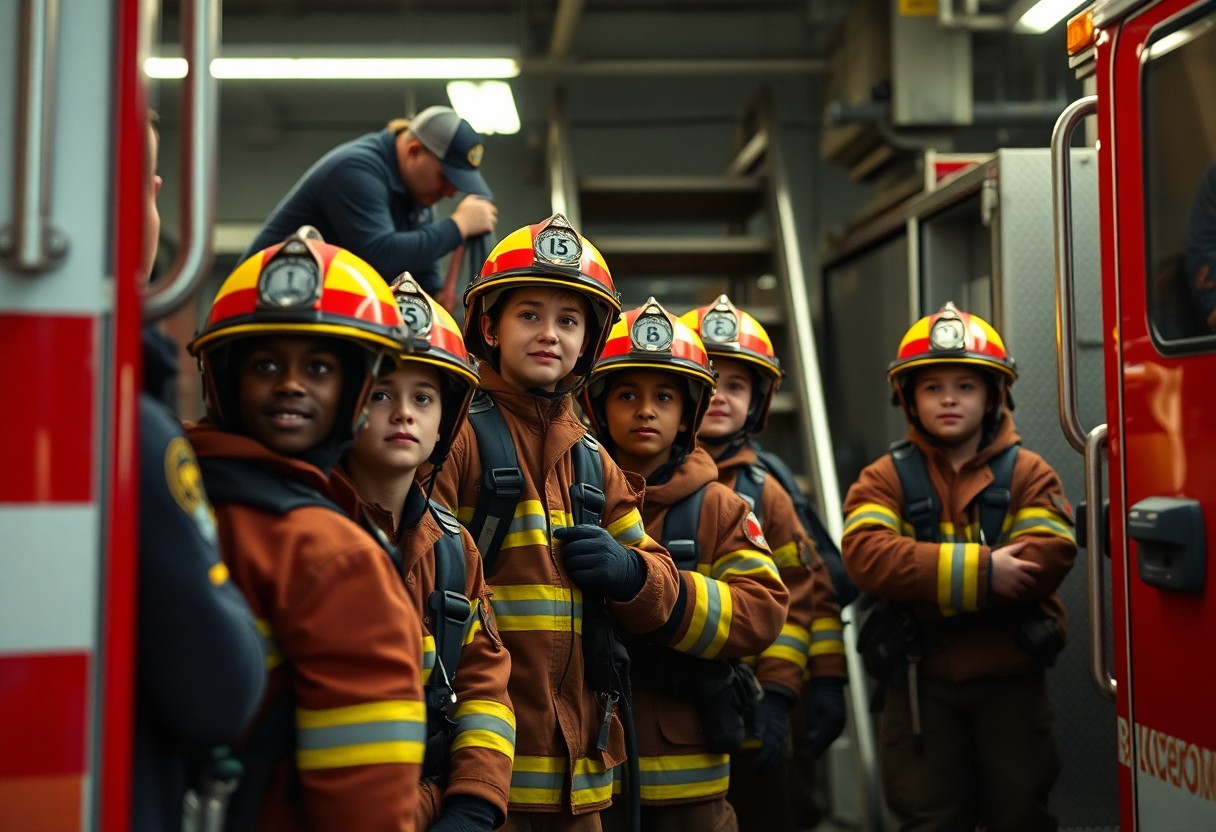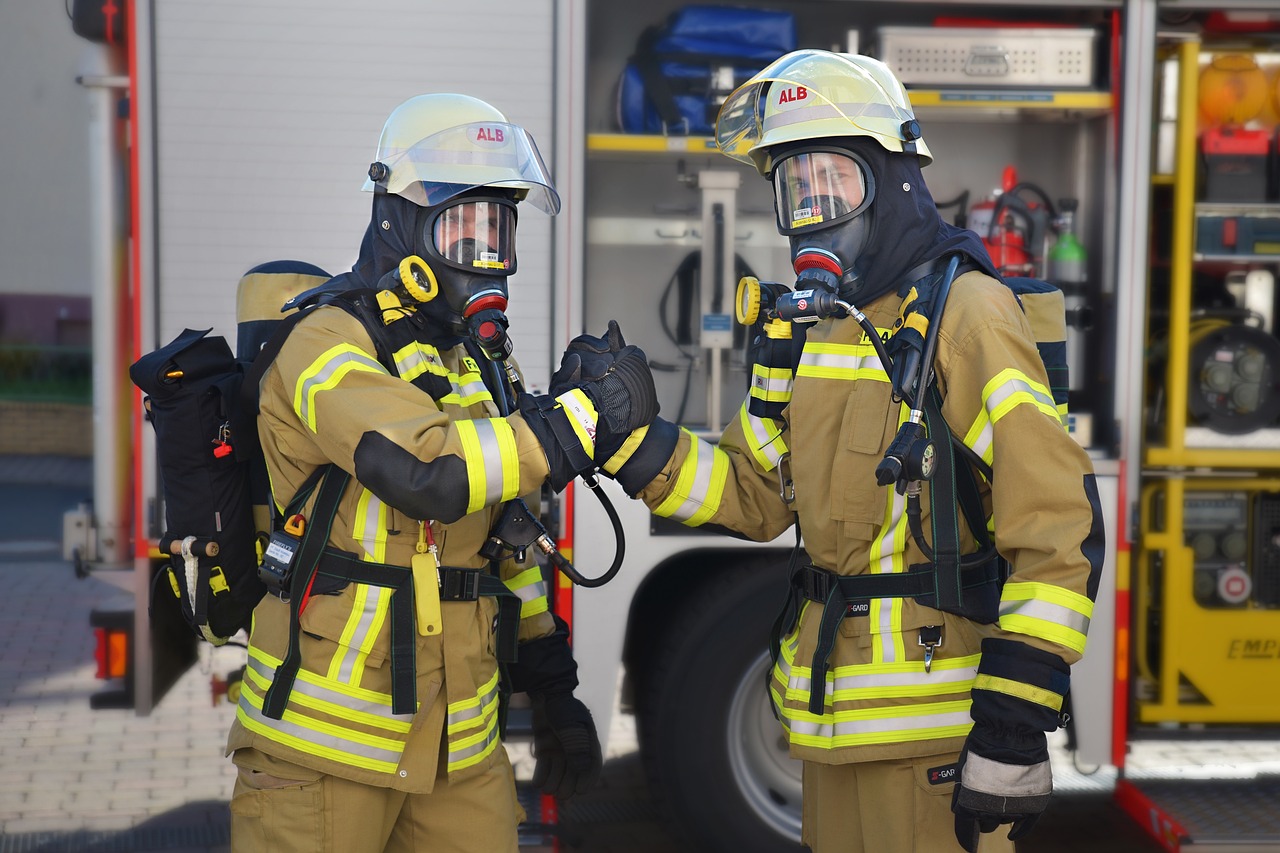Just creating an effective training curriculum for youth firefighters in your local fire department can empower young individuals with important skills while promoting safety and teamwork. You will need to consider their unique learning needs, physical capabilities, and the importance of fire safety education. By developing a structured program that blends theoretical knowledge with practical exercises, you ensure that these young firefighters are not only prepared for emergencies but also foster a deep respect for the firefighting profession.
Understanding the Importance of Youth Firefighter Training
As a local fire department, enhancing youth firefighter training is necessary to fostering the next generation of emergency responders. By equipping young individuals with the skills and knowledge needed for firefighting, you create a strong foundation for both personal development and community safety. This training not only provides valuable life skills but also instills a sense of responsibility and teamwork among the youth.
Benefits to the Fire Department
Benefits to your fire department include increased community engagement and the development of future volunteer firefighters. By investing in youth training programs, you cultivate a pipeline of knowledgeable, dedicated individuals who can support your department’s mission. Additionally, these young firefighters can assist with various functions, allowing seasoned personnel to focus on more specialized tasks.
Benefits to the Community
Community involvement in youth firefighter training fosters a sense of trust and collaboration between your fire department and local residents. Young firefighters serve as role models, illustrating the values of public service and safety. This relationship encourages positive attitudes toward fire safety and preparedness.
It is necessary to recognize that a robust youth firefighter program not only cultivates a sense of leadership and responsibility but also directly impacts the community’s safety. Stronger ties to local youth promote awareness about fire prevention, enhancing overall community resilience. Engaging young individuals in fire safety initiatives can lead to a significant reduction in fire-related incidents and empower them to educate their peers and families on important safety measures. When your youth are trained and knowledgeable, they become an integral part of a proactive community prepared to handle emergencies efficiently.
Key Factors to Consider in Curriculum Development
Some important factors to consider in developing a training curriculum for youth firefighters include:
- Age appropriateness
- Safety standards
- Local regulations
- Skills and knowledge gaps
After assessing these factors, you can ensure that the training is both effective and engaging for youth participants.
Age Appropriateness
Little consideration should be given to age appropriateness, as the training content and delivery methods must align with the varying developmental stages of your youth firefighters. Tailoring activities to their cognitive and physical abilities can maintain their interest and ensure effective learning.
Safety Standards and Regulations
Safety should always be a top priority when developing your curriculum. Adhering to established safety standards and local regulations ensures that your youth participants are well-protected and knowledgeable about safe practices.
Consider incorporating local and national fire safety codes into your curriculum to foster a thorough understanding among youth firefighters. Ensure that all training materials reflect up-to-date information, and involve professionals to conduct safe demonstrations during training sessions. Educating participants about emergency procedures and the importance of personal protective equipment goes a long way in embedding a culture of safety.
Skills and Knowledge Gaps
Consider identifying and addressing the skills and knowledge gaps within your youth firefighting group to enhance their training experience. This may involve pre-assessments to gauge their current understanding and abilities.
Knowledge about the specific skills and competencies required in firefighting can significantly enhance the effectiveness of your curriculum. Focus on developing their proficiency in vital areas such as fire behavior, team communication, and basic first aid. Regular evaluations can help you identify any emerging gaps, allowing you to modify training accordingly and keep your youth firefighters well-prepared.
How to Define Learning Objectives
Keep in mind that defining clear learning objectives is imperative for creating an effective training curriculum. These objectives should clearly describe what the youth firefighters will be able to achieve by the end of the training. By specifying the skills and knowledge you want them to gain, you will create a focused and structured approach that enhances both engagement and retention.
Setting Clear Goals
Define specific goals for your training program to guide the development of your curriculum. Consider what competencies the youth firefighters should acquire and how these skills will translate into practical applications. Clear goals not only provide direction but also motivate participants to strive for success.
Aligning with National Standards
There’s a need to ensure that your training objectives align with established national standards. This alignment helps maintain high-quality training and prepares youth firefighters for real-world scenarios they may face.
Learning objectives that align with national standards also ensure that participants meet the necessary qualifications and requirements for future training and certifications. Adhering to these standards delivers a comprehensive education on fire safety practices and the latest firefighting techniques. By embedding these national benchmarks into your curriculum, you foster a sense of professionalism and accountability, ensuring your youth firefighters are well-prepared for both teamwork and individual responsibilities in emergency situations.
Tips for Engaging Training Methods
All training sessions for youth firefighters should incorporate engaging methods to maintain interest and enhance learning. Effective strategies include:
- Hands-on activities that allow practical experience
- Team-building exercises to foster cooperation
- Interactive presentations that promote discussions
- Technology integration using apps or games
Assume that using diverse approaches will enrich your training curriculum and create lasting impressions.
Interactive Learning Techniques
The inclusion of interactive learning techniques is vital for capturing the attention of young firefighters. These methods, such as group discussions, role-playing, and quizzes, encourage participation and allow participants to express their understanding while engaging with their peers.
Real-Life Scenarios and Simulations
Learning through real-life scenarios and simulations is an effective way to prepare youth firefighters for situations they may encounter. These experiences encourage critical thinking and promote problem-solving skills under pressure.
Understanding real-life scenarios and simulations can help you and your youth firefighters grasp the complexities of firefighting in a controlled environment. By immersing themselves in realistic situations, they can practice decision-making and team coordination while managing potentially dangerous situations. It’s imperative to focus on both the positive aspects and the serious dangers they may face, promoting both awareness and readiness. These activities not only build confidence but also heighten their sense of responsibility and camaraderie within the team.
Assessing and Evaluating Training Effectiveness
Once again, assessing and evaluating the effectiveness of your training curriculum is vital to ensure youth firefighters are gaining the skills and knowledge necessary to excel. You can implement various evaluation methods, such as practical drills, written tests, or scenario-based exercises, to measure their progress. Tracking performance not only highlights areas for improvement but also helps maintain high standards within your local fire department. Regular assessments will foster a culture of continuous learning and development, ultimately enhancing your team’s effectiveness.
Monitoring Progress
Monitoring progress is necessary to understand how well youth firefighters are grasping the material. You should maintain records of their performance throughout training exercises, including attendance, participation, and skill acquisition. By reviewing these records regularly, you can identify patterns and address any concerns early. This proactive approach not only keeps the training on track but also reinforces the commitment to developing competent future firefighters.
Feedback Mechanisms
For effective training, instituting strong feedback mechanisms is necessary to gauge participant understanding and performance. Feedback should be multidimensional, involving self-reflection from the youth firefighters, peer assessments, and instructor observations. This approach ensures that everyone involved has a voice in the training process, promoting an inclusive atmosphere.
Effectiveness in training relies heavily on the feedback mechanisms you establish. By facilitating an environment where participants can provide and receive constructive criticism, you enable youth firefighters to learn from their experiences. Implementing anonymous surveys can encourage honest responses, while regular debrief sessions allow for face-to-face discussions. Prioritizing feedback creates open communication between you and your trainees, ensuring that the curriculum not only meets their needs but is also aligned with department standards. Ultimately, this will lead to safer, more competent firefighters who are prepared to face real-life challenges.
Building Community Support and Involvement
Not only is developing training programs for youth firefighters important, but fostering a supportive community environment can significantly enhance the effectiveness of your efforts. By actively engaging local residents, you can create a network of advocates who will champion your program, promote its benefits, and even recruit new participants. Building this community spirit encourages trust and collaboration, making your initiative a valued asset within the community.
Partnering with Local Organizations
For successful training programs, consider establishing partnerships with local organizations, such as schools, youth clubs, and civic groups. These alliances can provide valuable resources, venues for training, and support to help spread awareness about your youth firefighter program. By working together, you can leverage their networks to reach a wider audience and ensure your initiative is well-received.
Engaging Parents and Guardians
Engaging parents and guardians in your youth firefighter program is vital to its success. They play a key role in supporting their children’s interests and participation, so keeping them informed will foster enthusiasm and commitment.
With initiatives such as informative meetings, regular updates, and opportunities for involvement, you can strengthen the bond between your program and families. By creating pathways for parents to engage directly in their children’s training—through volunteering, attending events, or providing feedback—you foster a supportive environment that encourages participation. Highlighting the positive impact of firefighting skills on their children’s development can further galvanize parental support, ensuring a steady influx of dedicated youth participants.
Conclusion
The development of a training curriculum for youth firefighters in your local fire department involves careful planning and dedication to safety and skill-building. You should focus on age-appropriate training modules, engage experienced mentors, and incorporate hands-on activities to foster teamwork and leadership. By prioritizing continuous assessment and feedback, you ensure that your curriculum remains effective and relevant. Ultimately, you can cultivate a new generation of skilled firefighters who are prepared to protect and serve their communities.
Q: What are the key components to include in a training curriculum for youth firefighters?
A: When developing a training curriculum for youth firefighters, it is important to include several key components. First, the curriculum should cover basic firefighting techniques, safety protocols, and equipment handling. This foundational knowledge is important for all youth firefighters. Second, incorporate hands-on training opportunities that allow participants to practice skills in a controlled environment. Third, include modules on teamwork, leadership, and communication, as these soft skills are vital in emergency situations. Lastly, consider age-appropriate physical fitness and health education to ensure that participants are physically prepared for the demands of firefighting.
Q: How can I ensure the training curriculum for youth firefighters remains engaging and effective?
A: To keep the training curriculum engaging and effective, it is important to incorporate a variety of teaching methods. Use interactive activities, such as drills, role-playing scenarios, and team challenges to foster engagement. Visual aids, such as videos and hands-on demonstrations, can also enhance learning. Additionally, regularly seek feedback from participants on the curriculum content and teaching methods. This feedback will help identify areas for improvement and ensure the program meets the needs and interests of the youth. Finally, including guest speakers from the fire service and providing opportunities for real-world experiences will further enhance the learning process.
Q: What resources are available for developing a youth firefighter training curriculum?
A: There are numerous resources available for developing a youth firefighter training curriculum. The National Fire Protection Association (NFPA) provides guidelines and standards specific to the training of junior firefighters. Local fire departments often offer existing programs that can serve as models for your curriculum. Additionally, fire service organizations and professional training groups provide access to training manuals, online resources, and workshops. Networking with other fire departments that have established youth programs can also provide valuable insights and best practices. Lastly, consider collaborating with educational institutions for support in curriculum design and pedagogy.



